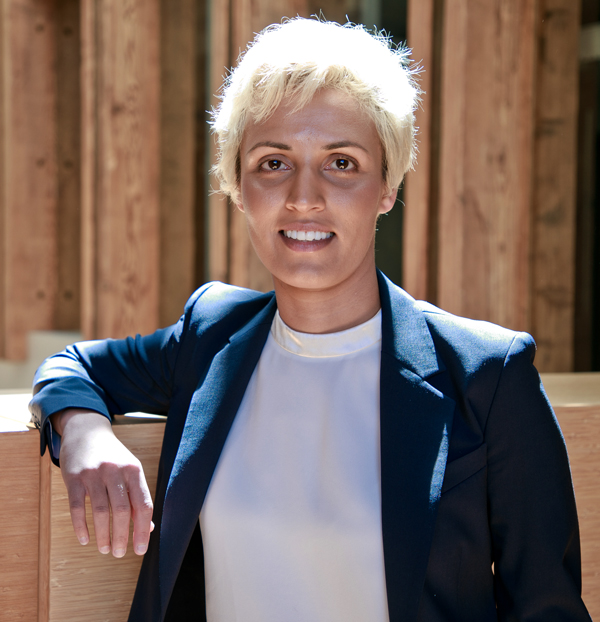By: Cynthia Macdonald
24 Jan, 2019

Narang’s approach could lead to new forms of clean energy, novel devices

As a materials scientist, 2018 CIFAR Azrieli Global Scholar Prineha Narang is acutely conscious of things many of us take for granted. How tiny nanostructures in a butterfly’s wings interact with light to form colour, for example. Or how the astonishing lightness of carbon fiber makes her bicycle so easy to carry upstairs.
But fascinated as she is by the properties of existing materials, Narang is even more excited about the ones taking shape in her mind. In the lab she runs at Harvard, she and her team conduct theoretical work in which traditional materials are lured well outside their “comfort zones.” Freed from the bonds of their normal thermal, optical and electronic properties, materials can be transformed into the stuff of which cheaper, simpler and more sustainable technologies are built.
“Some of the materials we think about wouldn’t be available on the shelf right now,” Narang acknowledges. “There are current challenges making them at scale. But those we’re working toward will be a lot better than the ones we have today, with applications in space technology, consumer electronics, energy conversion and more.”
Narang aims to accomplish this through quantum materials engineering, a field guided by quantum mechanics rather than classical physics. In the classical world, matter is analyzed at the macroscopic level and behaves predictably. But quantum scientists like Narang work with matter at its smallest scale. Here, subatomic objects act as both particles and waves, behaving in ways that cannot be measured with absolute precision.
“It’s a subfield where totally new directions are always popping up,” Narang says. In her quantum science and engineering class at Harvard, she routinely tells students that what they’re learning is subject to change from one year to the next.
“There’s no guarantee that the next time I teach the class, what I’m saying will be exactly the same. I know that there are certain other fields where people have been using the same lectures for decades; I can’t even re-use mine two years in a row!” she says. “But it’s also so exciting. Every year there are more and more students entering the field, and they get to learn very new, here-and-now stuff”.
One big problem that quantum engineering stands to solve is sustainability: our dependence on rare and vanishing terrestrial metals, currently essential to the construction of consumer electronics.
“Are we using ingredients that come from, say, only one mine in Chile, or are we looking at things that are more abundant than that?” she asks. “There are certain parts of the periodic table where we should say, let’s cross that out. We need to move away from using things that are not sustainable.”
Which will mean looking to more plentiful energy sources, such as the sun. This is the key idea behind CIFAR’s Bio-Inspired Solar Energy program, of which Narang is a proud member.
“We think there are a whole lot of design principles that we could take from natural processes, photosynthesis being one of them, and use them from a quantum perspective,” she says.